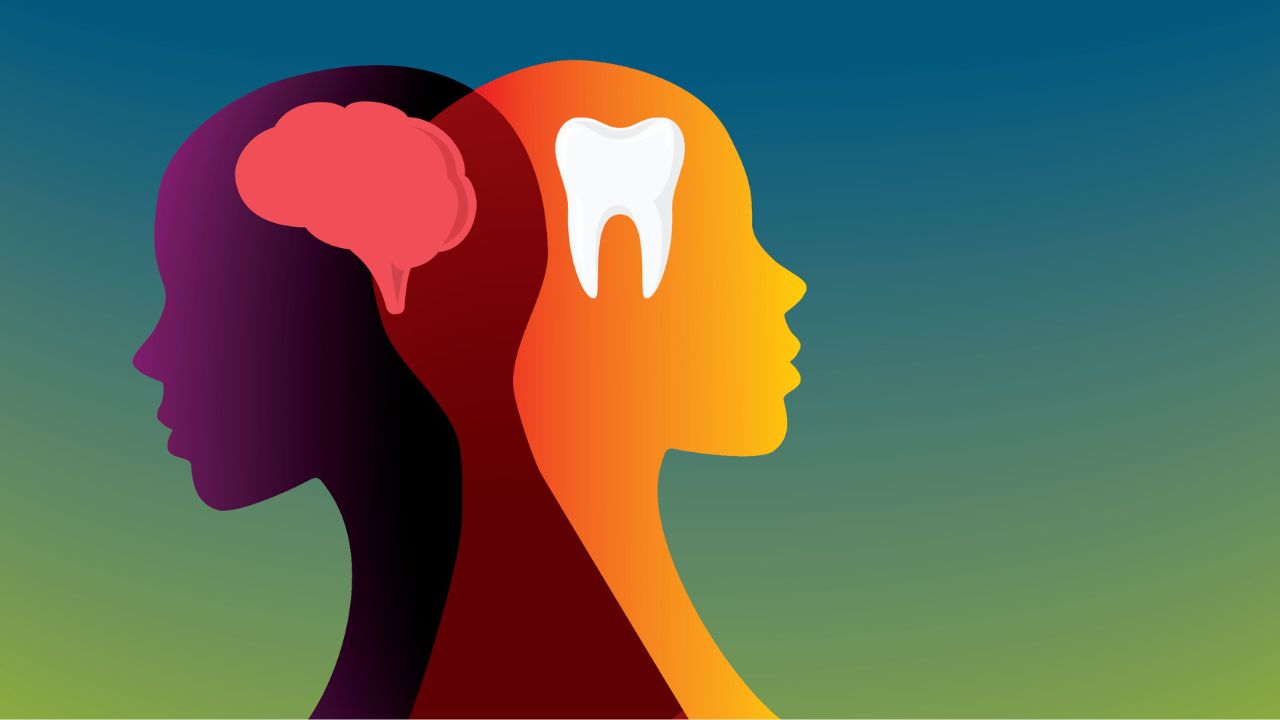We’ve all experienced the spine-tingling rush of realizing we’re going to be late for something important. Your heart starts to race, your mouth becomes bone dry, and you break out in a cold sweat – in other words, you’re stressed. Stress activates “fight-or-flight” – the body’s physical response to a perceived threat, which kicks off a wave of changes that prepare the body to face the oncoming danger. This includes production of hormones like cortisol and adrenaline that help the body to pump blood faster, decrease feelings of hunger, and increase blood sugar to provide energy to muscles. Throughout human history, stress allowed our ancestors to jump into action, fighting off the predators that hunted them or fleeing as fast as possible to escape them. In that way, the response evolved to keep us alive and allow the human race to continue.
As we have moved to a more industrial society and there are fewer physical threats and dangers, our bodies still carry the fight-or-flight response. This is where the key term perceived danger comes into play. While in the short term the physical responses that stress provides may help to motivate us to arrive on time or jump out of the way of an oncoming car, these responses are meant to be short-lived. In some instances, though –especially in our modern world – this is not the case. Ongoing, chronic sources of stress, like financial difficulties or discrimination by society, take a long-term toll on the body. Rather than benefitting us, chronic stress wears down the organs it activates, wreaking havoc on the heart, digestion, and blood sugar.
In the absence of buffers and coping strategies to disrupt these chronic changes, stress becomes toxic.
But why is it that some people seem to have a hair-trigger stress response, jumping into fight-or-flight at a moment’s notice, and taking longer to calm themselves down after the threat has been resolved? Even within single families, there is often at least one worrywart. What causes such different responses to the same perceived threats?
Nature Vs. Nurture?
For as long as human beings have been aware of differences between closely related family members, we have been debating whether innate differences in our genetic makeup or the influence of our environment play a bigger role in who we ultimately become.
Throughout the 20th century, “twin studies” attempted to answer the question. The setup is simple: take two genetically identical twins and watch who they become and what health conditions they develop. If nature (in the form of the innate genetic blueprint we receive from our parents) were the explanation for differences in disease, then identical twins with their indistinguishable genetic code should develop identical diseases. But countless twin studies have shown that’s not the case.
On the other hand, if environmental influences such as childrearing and exposure to toxins explain health outcomes, then twins who are separated at birth through adoption and raised in different environments, should have vastly different health and personalities. Again, we now know this too is not the case.
While the world was debating these ideas, answers began to arise from an unexpected source: hunger. From 1944-1945, Amsterdam experienced severe famine that required significant rationing of food supplies – including for pregnant mothers. As researchers sorted through the effects of this period of prolonged hunger and poor nutrition, they noticed significant differences between babies born during the period which could not be explained by genetics alone. Clearly, the nutritional environment for the mothers was influencing all manner of health outcomes in their infants, from size and weight at birth to long-term risk for chronic diseases.
It was now obvious that the environment had the power to significantly influence health outcomes, but it wasn’t the whole story. Andover just the past 20 years, the nature versus nurture debate has been turned on its head— all thanks to a mischief of rats.
Licking Your Rats
In 2004, a landmark study with a somewhat cruel premise divided lab rats into two groups: one litter of rat pups would be given full access to their mothers while the other would be separated from their mother’s loving care. Mother rats naturally lick, groom, and nurture their pups on instinct. However, when rat pups were raised without access to this biologically necessary nurturing, they grew up to be anxious and less able to manage stress than their well-nurtured peers. They were also less likely to nurture their own rat pups, repeating the cycle for the next generation.
When scientists looked closer, they found that while the genetic code of these rats— the “nature” blueprint for their cells— remained the same, a cascade of changes took place within the cells in response to a nurturing or non-nurturing environment that altered how the coded blueprint translated into health and behavior. These changes were not genetic, but epigenetic, with epi coming from the Greek for “above” the genome. Epigenetic changes were able to “turn on” the expression of genes and “turn off” others based on environmental cues.
Indeed, the lack of maternal nurturing and caregiving was a significant perceived danger to helpless rat pups and caused substantial stress. Without the licking and nurturing they craved from their mothers, the epigenetic changes triggered by this stress led to a decrease in the expression of glucocorticoid receptors in the brain, which act to recognize stress hormones and signal the body that there is enough of the hormone to create a response. This led to higher levels of stress hormones and ultimately more of the changes brought on by toxic stress such as heart disease and diabetes. Similar mechanisms have now been shown to be at work in humans for a variety of genes and health conditions.
Resilience as an Epigenetic Response
So what can we, as parents and providers, do about it? We know that almost 90% of a child’s brain development occurs before they are 5 years old, meaning that environmental influences on epigenetics will be strongest in early childhood. Notably, however, the original “lick your rats” study showed that when rats had the opportunity to be fostered by a nurturing mother, the changes were reversible, even later in life. The ability to adapt to achieve a good outcome in the face of adversity has been termed resilience. Over the years, it has been determined that resilience, too, is a result of the complex epigenetic interplay of nature and nurture. As children grow, they naturally face obstacles along the way that provide the opportunity to develop internal coping strategies and strengthen resilience. No life will be completely absent of stress and traumatic experiences; indeed, children need these experiences to act as a training ground for the challenges in life.
The amazing news is that the most important factor in fostering resilience is the presence of at least one stable relationship with a loving and supportive adult. Showing up for children by offering a listening ear, encouraging them and pointing out their strengths in times of need strengthens coping skills and builds resilient adults. Through adversity, parents and other adult caregivers have the opportunity to act as the “lighthouse” for children – providing stability and modeling the resilience we want our children to learn through connection and
reliability. Ultimately, the goal is, as Jonathan Haidt says in his 2024 landmark book The Anxious Generation, to “prepare the child for the road, not the road for the child.”
The elegantly simple answer from epigenetics to the age-old nature versus nurture debate is: it’s both. Both innate genetic differences and the environment and experiences we encounter through life shape our ultimate outcomes. To influence epigenetics and build resilience, we must trust the world to provide the necessary adversity on the road to adulthood, while we act as the stable and supportive lighthouse for kids to return to when the going gets rough…
… and don’t forget to lick your rats.
References
Susanne R. De Rooij et al., “Lessons Learned from 25 Years of Research into Long Term Consequences of Prenatal Exposure to the Dutch Famine 1944–45: The Dutch Famine Birth Cohort,” International Journal of Environmental Health Research 32, no. 7 (July 3, 2022): 1432–46, https://doi.org/10.1080/09603123.2021.1888894.
Ian C. G. Weaver et al., “Epigenetic Programming by Maternal Behavior,” Nature Neuroscience 7, no. 8 (August 2004): 847–54, https://doi.org/10.1038/nn1276.
Marija Kundakovic and Frances A Champagne, “Early-Life Experience, Epigenetics, and the Developing Brain,” Neuropsychopharmacology 40 (2015): 141–53, https://doi.org/10.1038/npp.2014.140.
National Scientific Council on the Developing Child, “Supportive Relationships and Active Skill-Building Strengthen the Foundations of Resilience: Working Paper 13,” 2015, http://www.developingchild.harvard.edu.
Timothy T. Brown and Terry L. Jernigan, “Brain Development During the Preschool Years,” Neuropsychology Review 22, no. 4 (December 2012): 313–33, https://doi.org/10.1007/s11065-012-9214-1.
Kevin J. Dudley et al., “Epigenetic Mechanisms Mediating Vulnerability and Resilience to Psychiatric Disorders,” Neuroscience & Biobehavioral Reviews, Resilience and Adaptive Aspects of Stress in Neurobehavioural Development, 35, no. 7 (June 1, 2011): 1544–51, https://doi.org/10.1016/j.neubiorev.2010.12.016.
Kenneth R. Ginsberg, Lighthouse Parenting: Raising Your Child With Loving Guidance for a Lifelong Bond (American Academy of Pediatrics, 2025).
Jonathan Haidt, The Anxious Generation: How the Great Rewiring of Childhood Is Causing an Epidemic of Mental Illness (Penguin Press, 2024).






